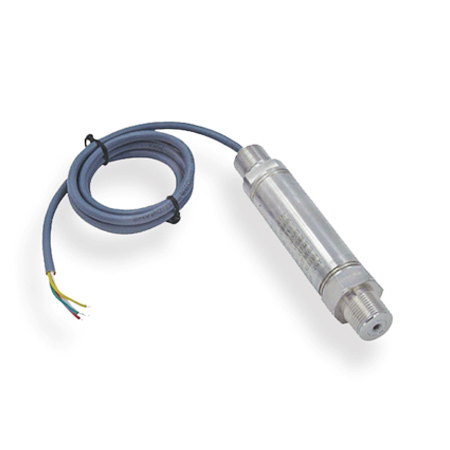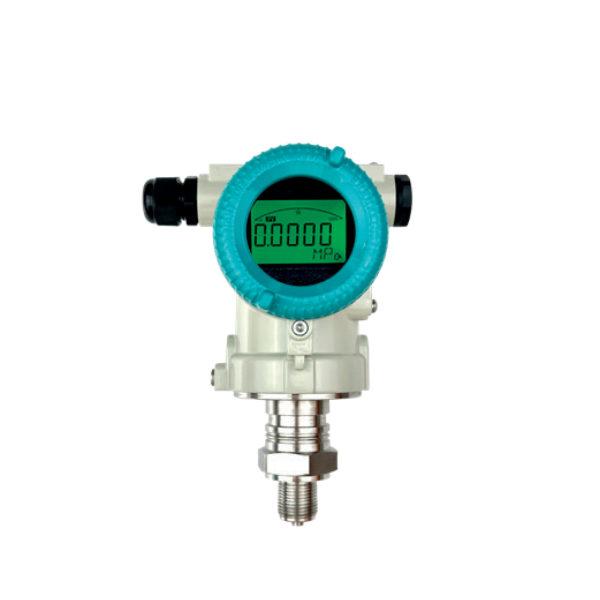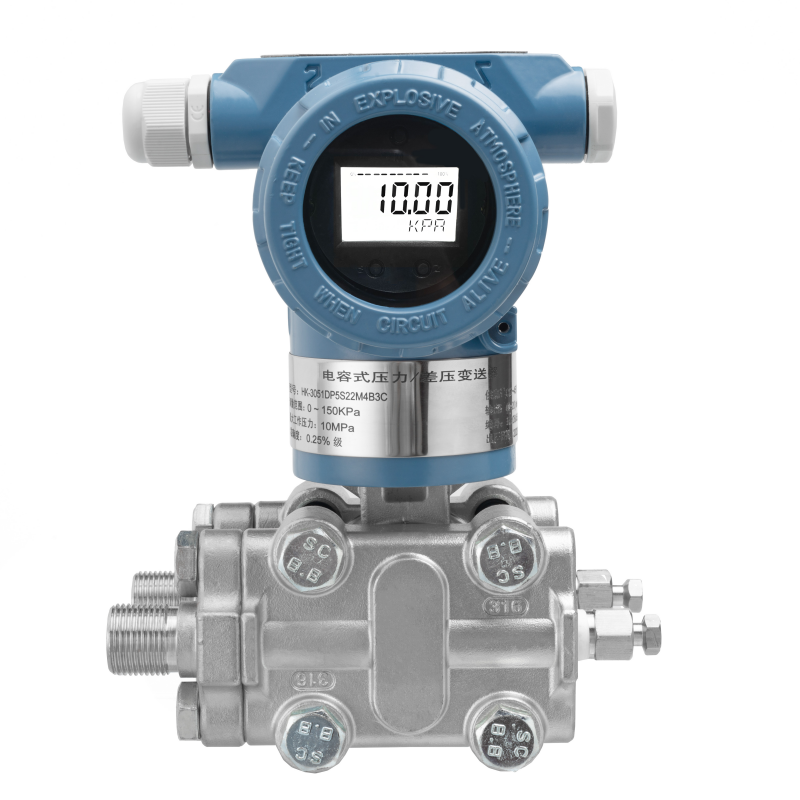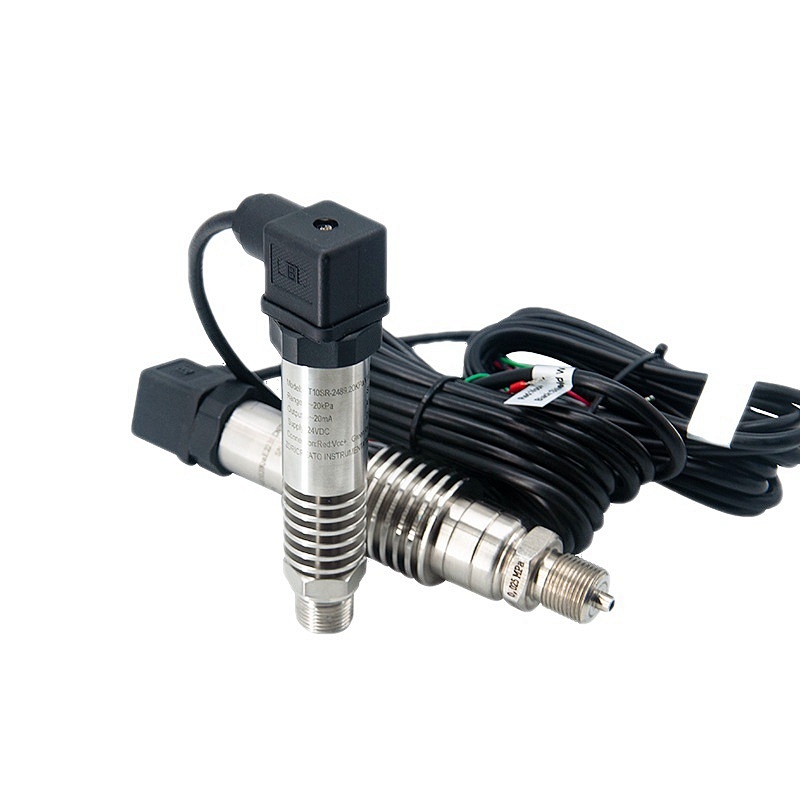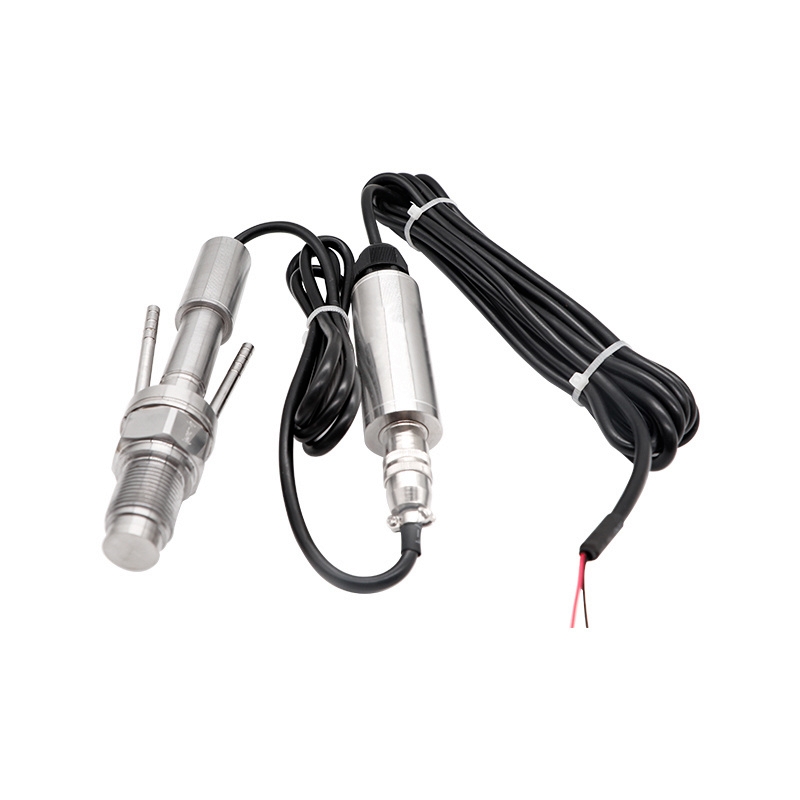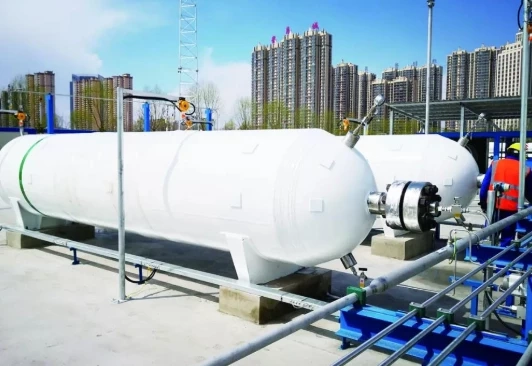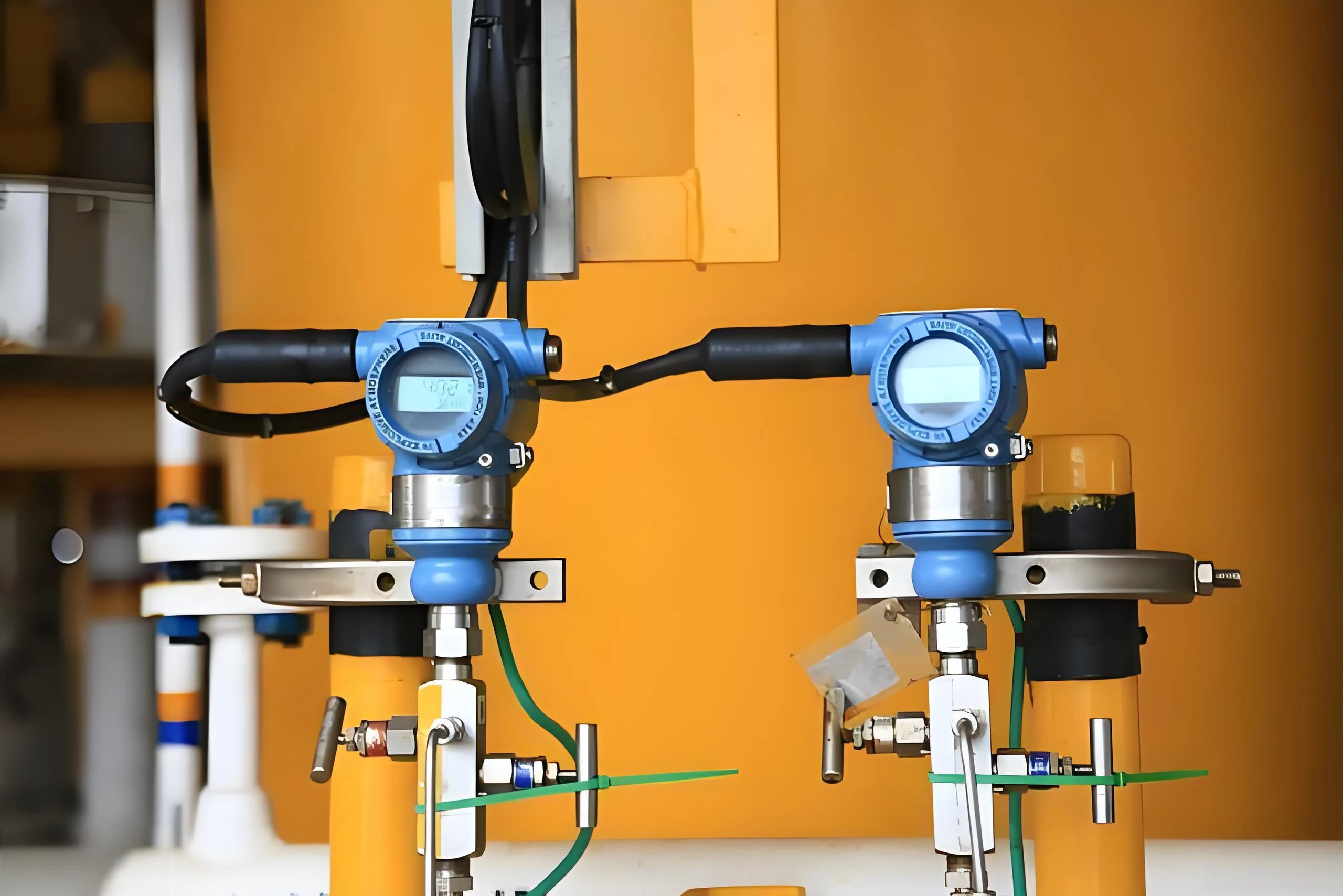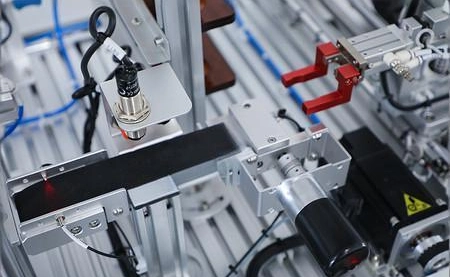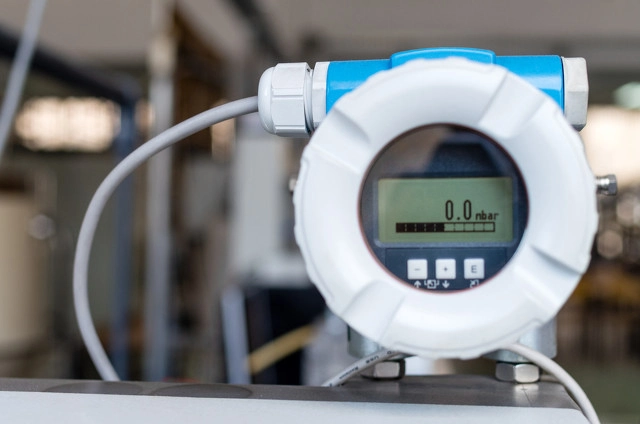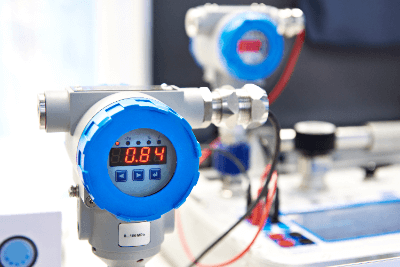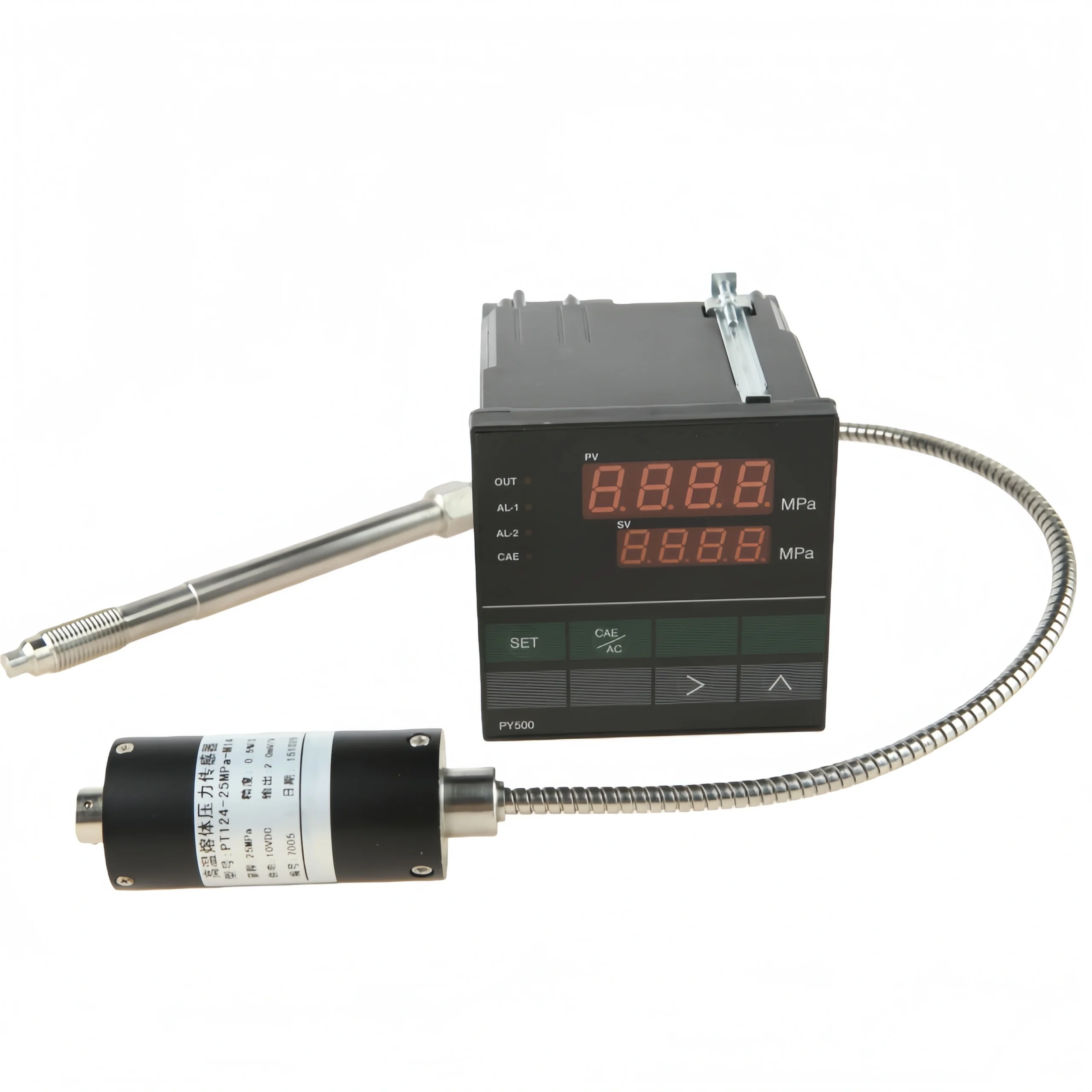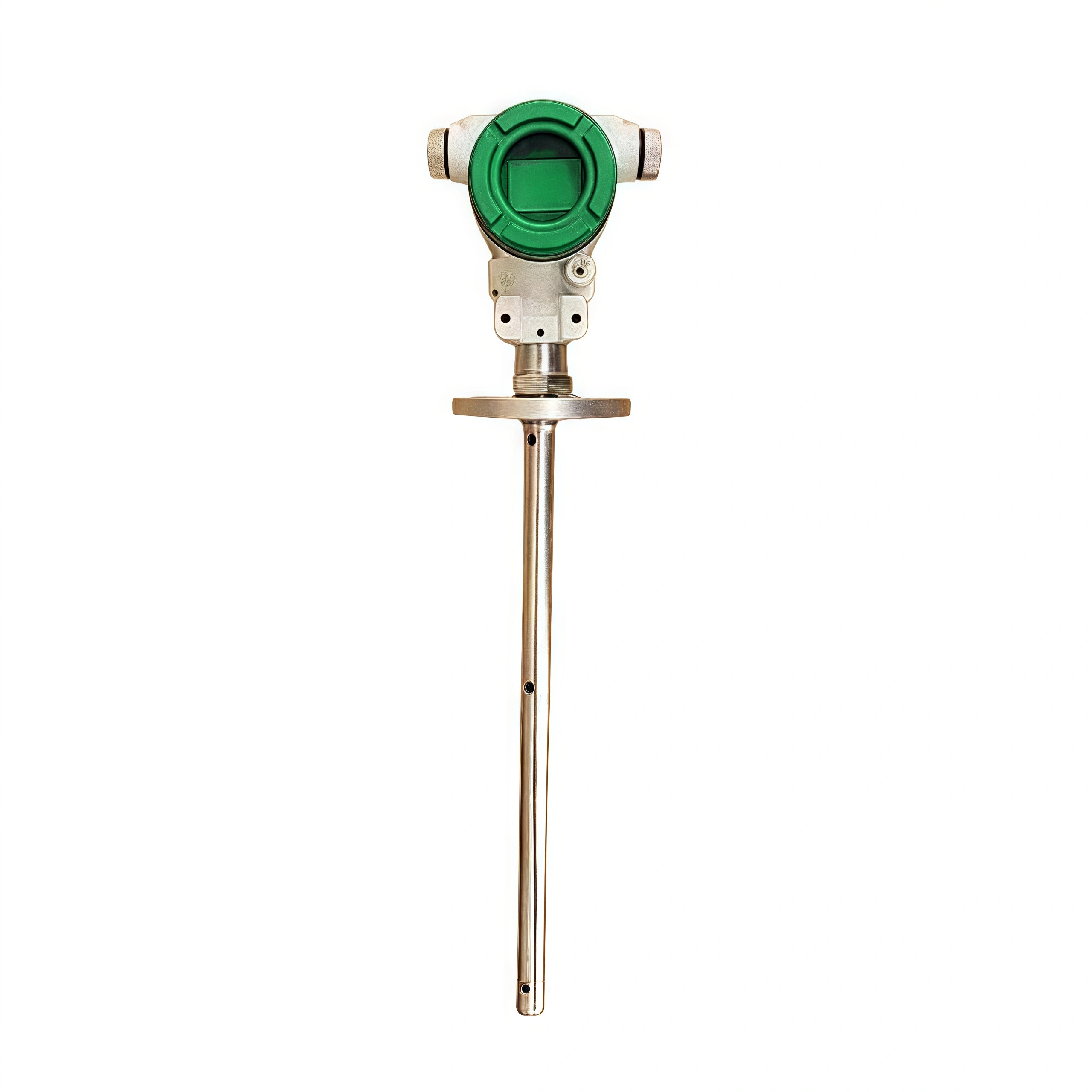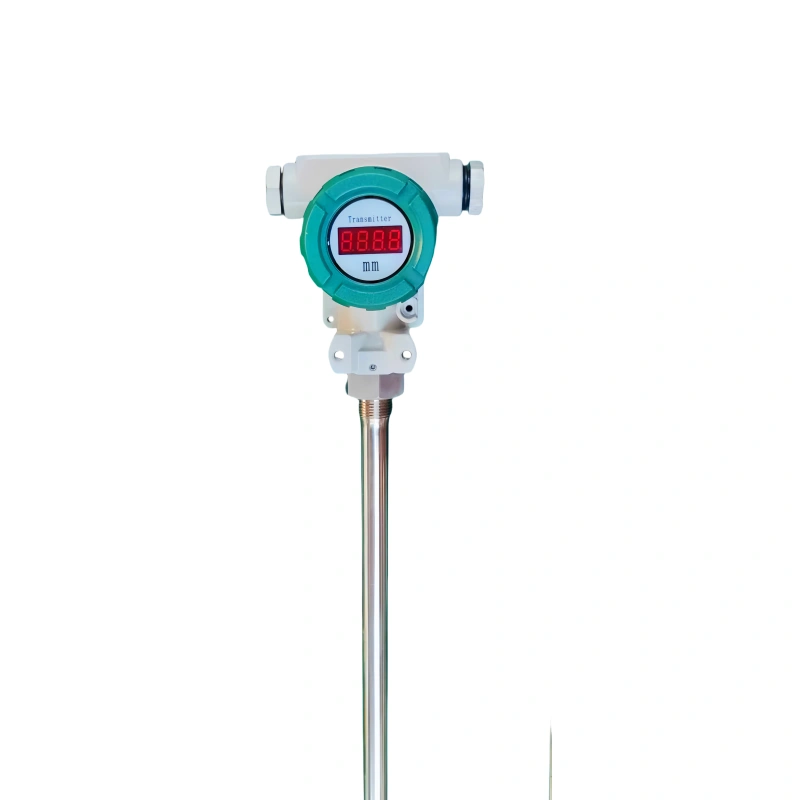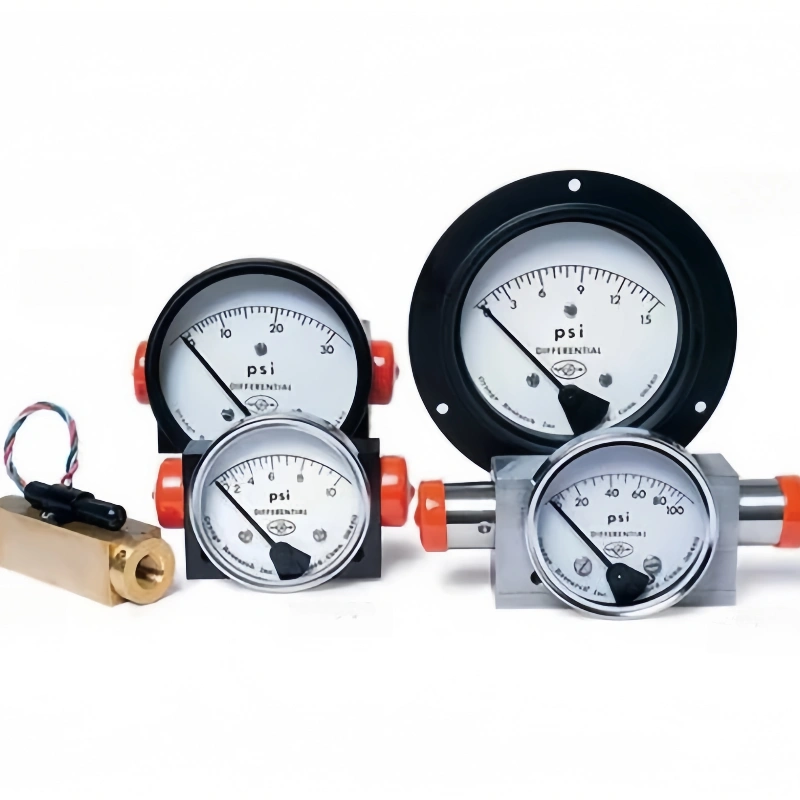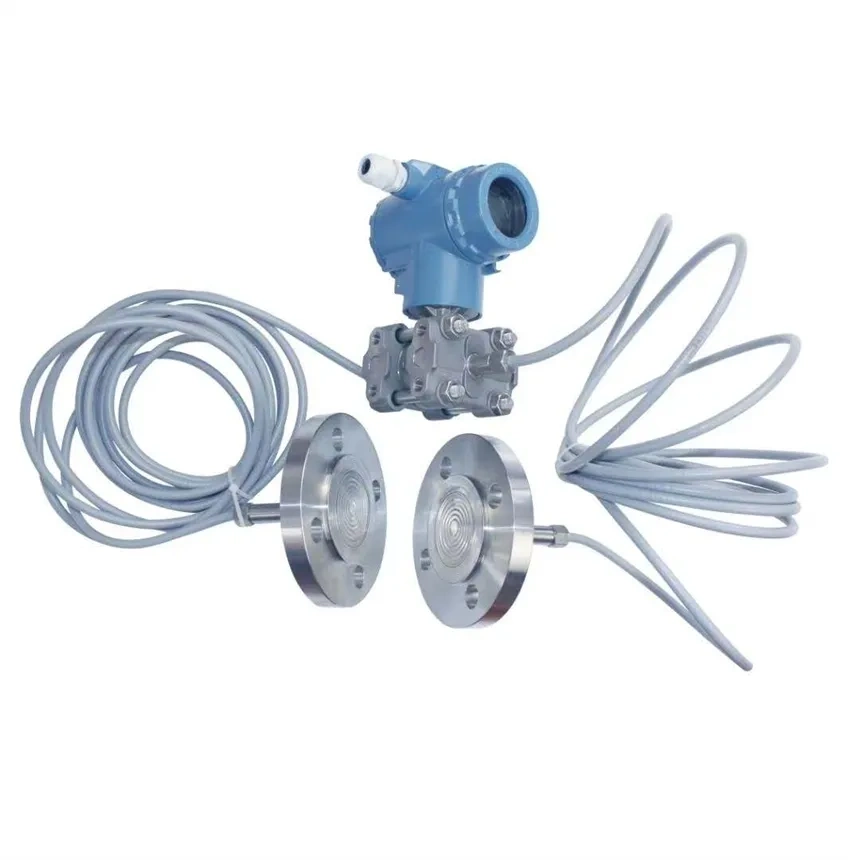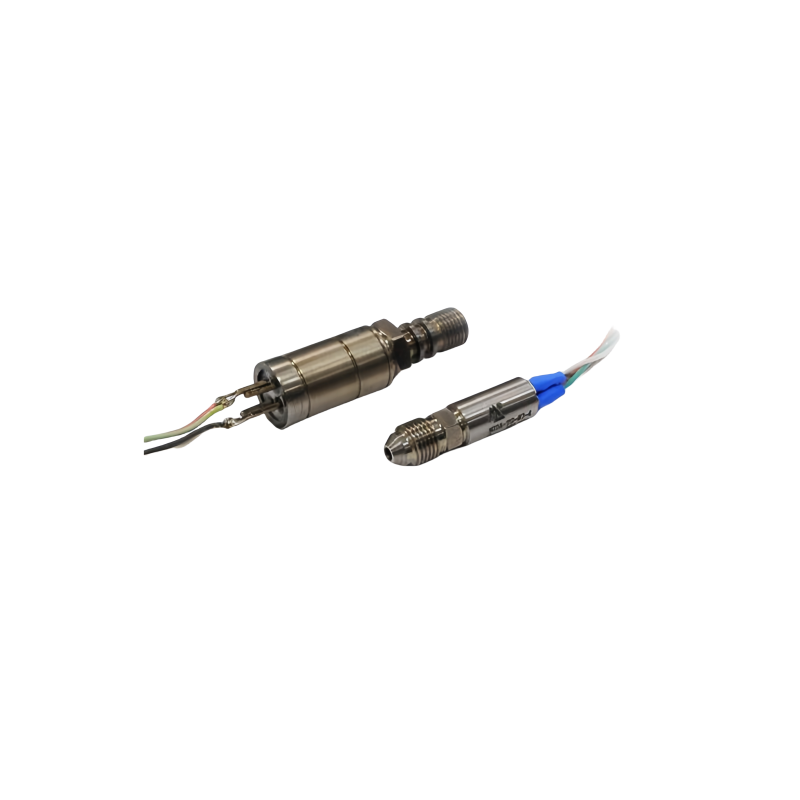Hydraulic systems increase force by varying pressure. Hydraulic pressure transducers monitor system pressure in real time and convert pressure signals into electrical outputs. These devices provide the information necessary to control valves or continuously monitor tank levels.
Main applications include hydraulic station control systems, hydraulic power units, machine tools, die-casting machines, printing presses, and injection molding machines (electromechanical).
Sino-Inst has many years of experience in pressure measurement. In this article, we will provide a detailed introduction to hydraulic pressure sensors. We hope this article will be helpful to you.
What is a Hydraulic Pressure Transducer?
A Hydraulic Pressure Transducer is a device used to measure hydraulic oil pressure. Can display real-time hydraulic oil pressure locally or output an electronic signal such as 4-20mA, 0-5V or RS485. It can also measure lubricating oil and oil-based liquids, etc.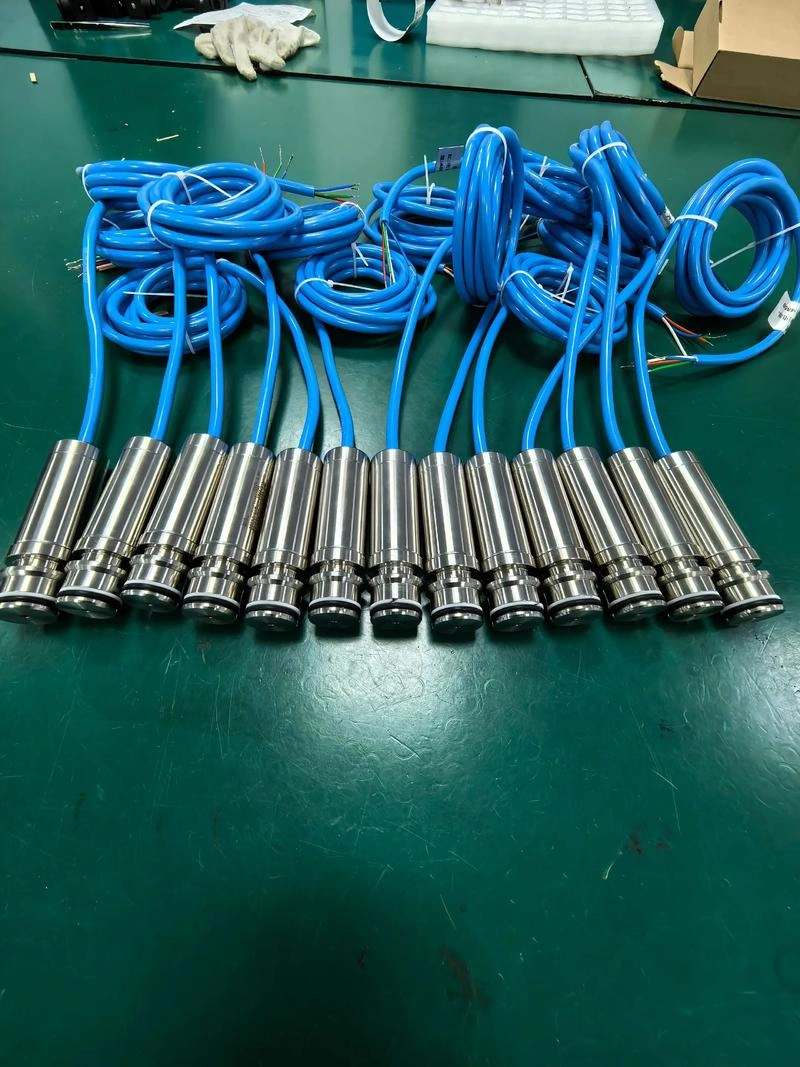
How does a Hydraulic Pressure Transducer Work?
A hydraulic pressure transducer works by measuring the force exerted by hydraulic fluid on a surface and converting this force into an electrical signal. This signal is then converted into a pressure reading that can be displayed or recorded for further analysis.
Pressure of the hydraulic fluid acts on a diaphragm or sensing element of the hydraulic pressure sensor. These elements undergo minute deformations, such as deformation of a strain gauge, charge generation in a piezoelectric crystal, or capacitance change in a capacitor. This deformation or change causes changes in the sensor’s internal electrical properties, such as resistance, charge, or capacitance.
These changes in electrical properties are then detected by signal processing circuitry and converted into standard analog or digital signals, enabling the measurement and monitoring of hydraulic pressure.
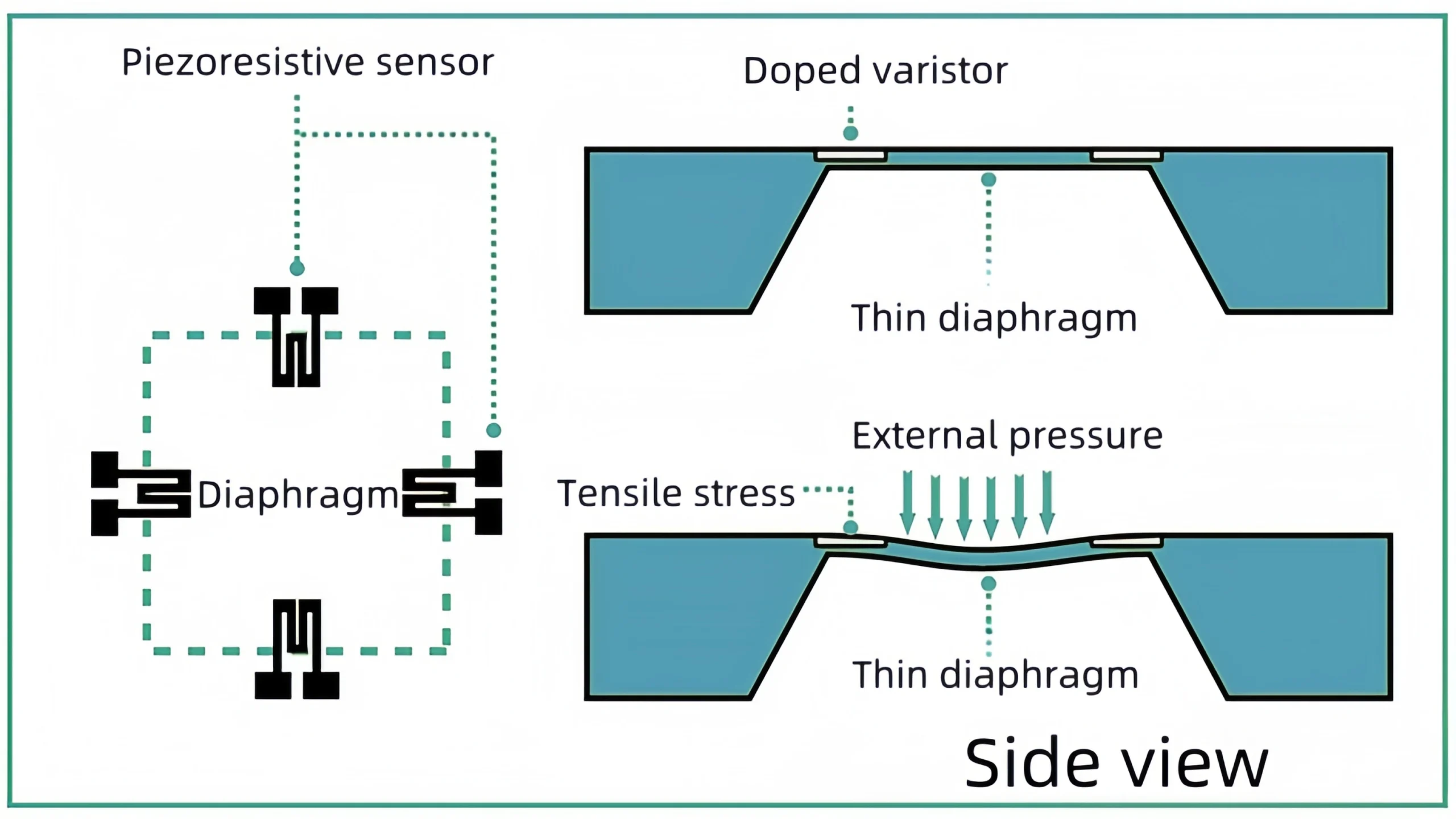
Hydraulic Pressure Transducer Types
There are many types of hydraulic pressure transmitters. Based on the sensor’s measurement principle, they include diffused silicon piezoresistive pressure sensors, ceramic piezoresistive pressure sensors, sputtered thin film pressure sensors, capacitive pressure sensors, and high-temperature resistant sapphire pressure sensors.
Read more about: 7 Types of Pressure Sensors: Different Types, Working Principles, and Definitions
Of course, hydraulic pressure transmitters can also be categorized based on the pressure they measure: gauge pressure sensors, absolute pressure sensors, and differential pressure sensors.
Gage pressure: A common pressure gauge measures gauge pressure. This refers to pressure relative to atmospheric pressure.
Absolute pressure: This refers to pressure relative to a perfect vacuum. This refers to pressure relative to zero pressure.
Differential pressure: The relative difference between two pressures.
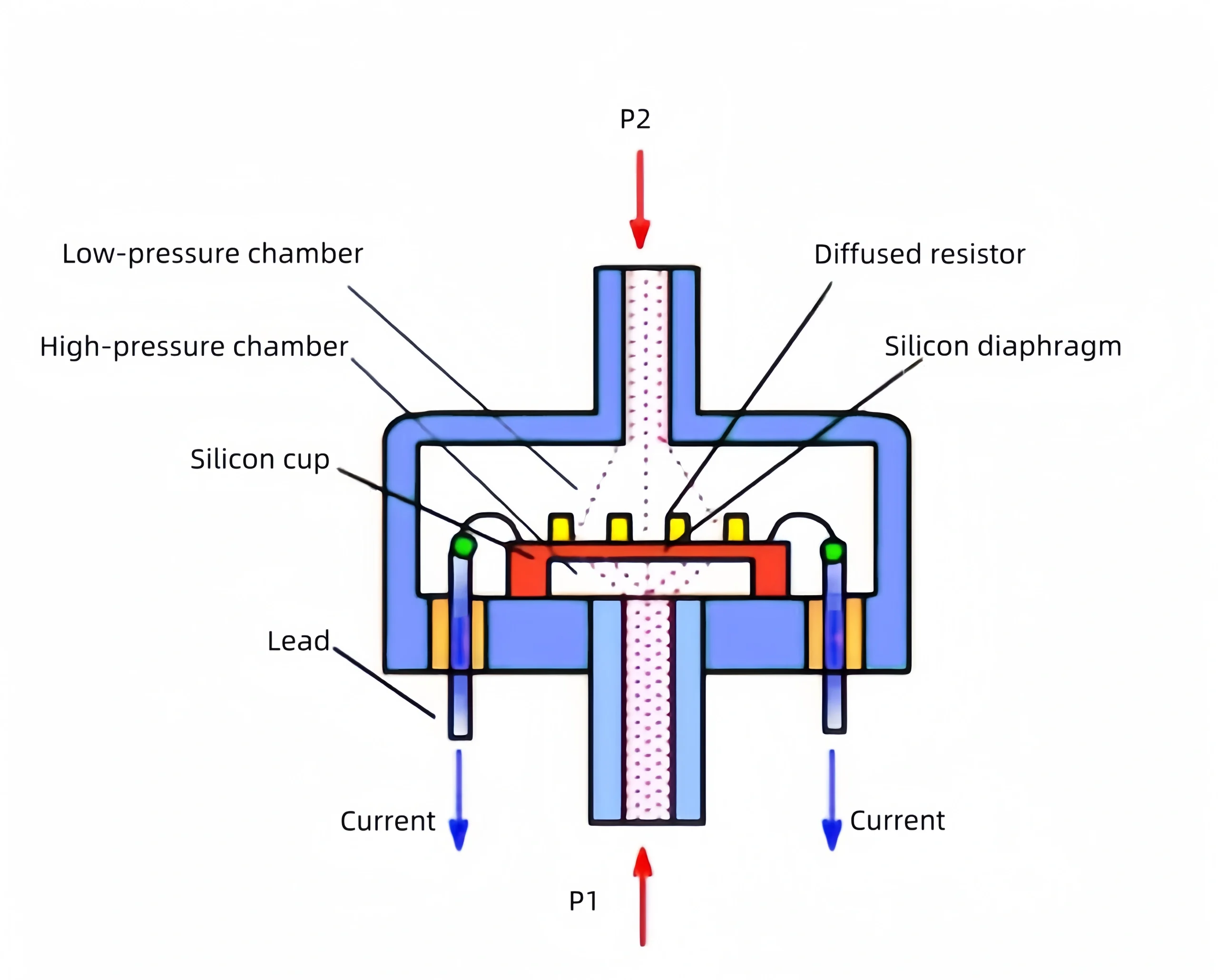
Featured Hydraulic Pressure Transducers
Hydraulic Pressure Transducer Applications
Hydraulic pressure transducers monitor oil pressure to ensure that the system operates within the designed pressure range. On the other hand, they provide valve control information. Hydraulic pressure sensors are widely used in various industries.
Automotive manufacturing
Hydraulic pressure transducers are used in engine control, braking systems, suspension systems, and transmissions.
Industrial Automation
Hydraulic pressure transducers are used to monitor and control pressure in hydraulic systems. For example, in punch presses, injection molding machines, and hydraulic braking systems, hydraulic pressure sensors help maintain efficient equipment operation.
Aerospace
Hydraulic pressure transducers are used to monitor hydraulic systems in aircraft and spacecraft.
Scientific Research
Hydraulic pressure transducers are widely used in laboratory experiments and data acquisition, enabling researchers to measure and record pressure changes.

How to Select a Hydraulic Pressure Transducer?
Selecting the right hydraulic pressure transmitter is not easy. With years of experience in pressure measurement, Sino-Inst has compiled a list of factors to consider. We hope this information will be helpful to you.
1. Measured medium
First, confirm what the measured medium is.
Is it highly viscous? Highly viscous media may require a flat diaphragm sensor.
Is it corrosive? Corrosive media require a sensor material that is compatible with the medium.
2. Pressure Range
Confirm the required pressure measurement range. It is generally recommended that the operating pressure be within 1/3 to 2/3 of the sensor’s measurement range. Also consider overload pressure.
Additionally, confirm whether the measurement is absolute pressure, gauge pressure, or differential pressure.
3. Temperature
The medium’s temperature directly affects the sensor. Knowing the medium’s maximum temperature can help determine whether a cooling system is needed.
Also, it’s important to confirm the ambient temperature to avoid damage to the hydraulic pressure transmitter’s circuit board.
4. Accuracy Requirements
The accuracy range of general pressure transmitters is 0.5% FS. Better ones can reach 0.1% FS.
5. Signal Output
The output signals of pressure sensors mainly include analog signals and digital signals, such as 4-20mA current signals, 0-5V or 0-10V voltage signals, RS485 communication protocols, HART, etc.
6. Sampling Frequency
The sampling frequency of common pressure transmitters is 2–3 kHz. If a higher frequency is required (e.g., 20 kHz, 50 kHz), a high-frequency pressure transmitter can be used.
7. Installation Dimensions and Accessories
Common installation methods include flange mounting and threaded mounting. Installation can be direct or remote.
Flange and threaded dimensions and forms can be customized.
Installation accessories typically include panel-mounted brackets, pipe-mounted brackets, etc.
8. Local Digital Display
Generally, compact pressure transmitters do not have a display. Intelligent pressure transmitters are equipped with a digital display, which allows for parameter settings and adjustments.
9. Explosion-proof and Corrosion-resistant
If the installation is in a flammable or explosive environment, choose an explosion-proof pressure transmitter. If the installation environment is humid or corrosive, choose a pressure transmitter made entirely of stainless steel.
Sino-Inst’s hydraulic pressure sensors can be customized with special specifications such as high temperature, high pressure, and corrosion resistance. A variety of mounting options and signal outputs are also available.
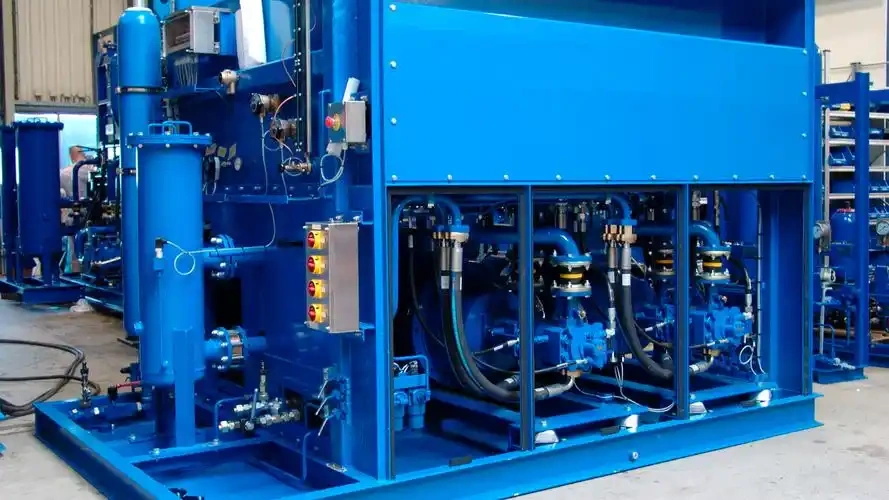
How do you measure hydraulic pressure?
To measure hydraulic pressure, the traditional mechanical method is to use a pressure gauge. Nowadays, electronic pressure transmitters are more commonly used.
Pressure gauge: A pressure gauge is a mechanical pressure measurement device. It does not require a power supply, and the pressure value is indicated by a mechanical pointer.
Pressure sensor: A pressure sensor converts pressure signals into electrical signals. These signals are then transmitted to a control system or data acquisition device. Some advanced pressure sensors also have data recording and alarm functions.
How to adjust pressure in a hydraulic system?
A pressure transmitter measures the hydraulic pressure. Based on the pressure value, the system or a person adjusts the valves.
Adjustment methods include:
- Manual adjustment. Staff manually open or close valves based on the real-time pressure value from the pressure transmitter.
- Pressure transmitters with switch signal output. Also known as pressure switches. The pressure transmitter automatically outputs a switch signal based on pre-set pressure values to control the valves.
- System control. The signals measured by the pressure transmitter are input into the control room. The control system evaluates the signals and outputs switch signals to control the valves.
Sino-Inst is a Chinese supplier of hydraulic pressure transducers. Our hydraulic pressure sensors are customizable, including those with special specifications such as high pressure, high temperature, and high corrosion resistance.
We have over 20 years of experience in hydraulic pressure measurement! If you need hydraulic pressure measurement or need to purchase hydraulic pressure transducers, please feel free to contact us!

